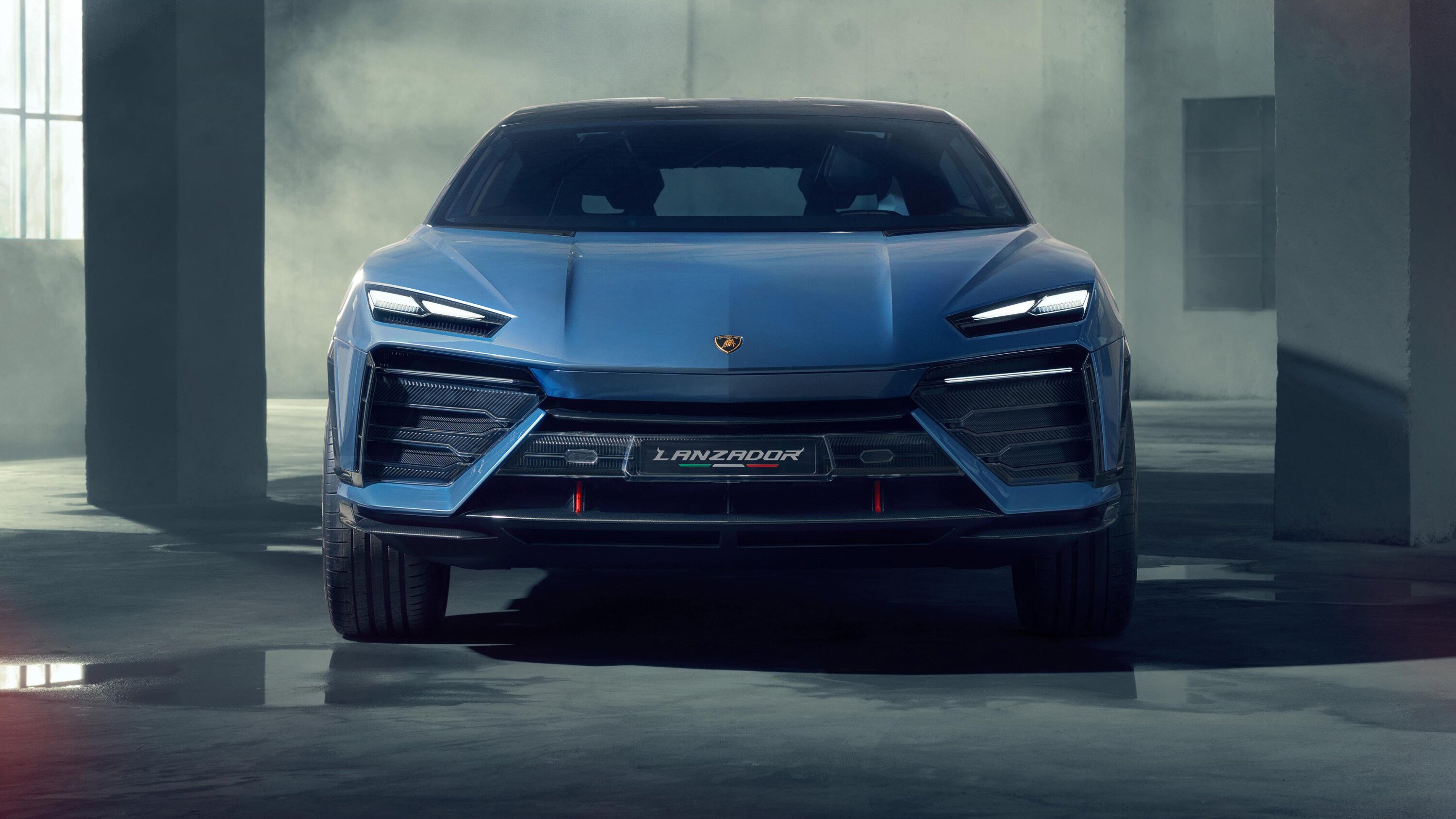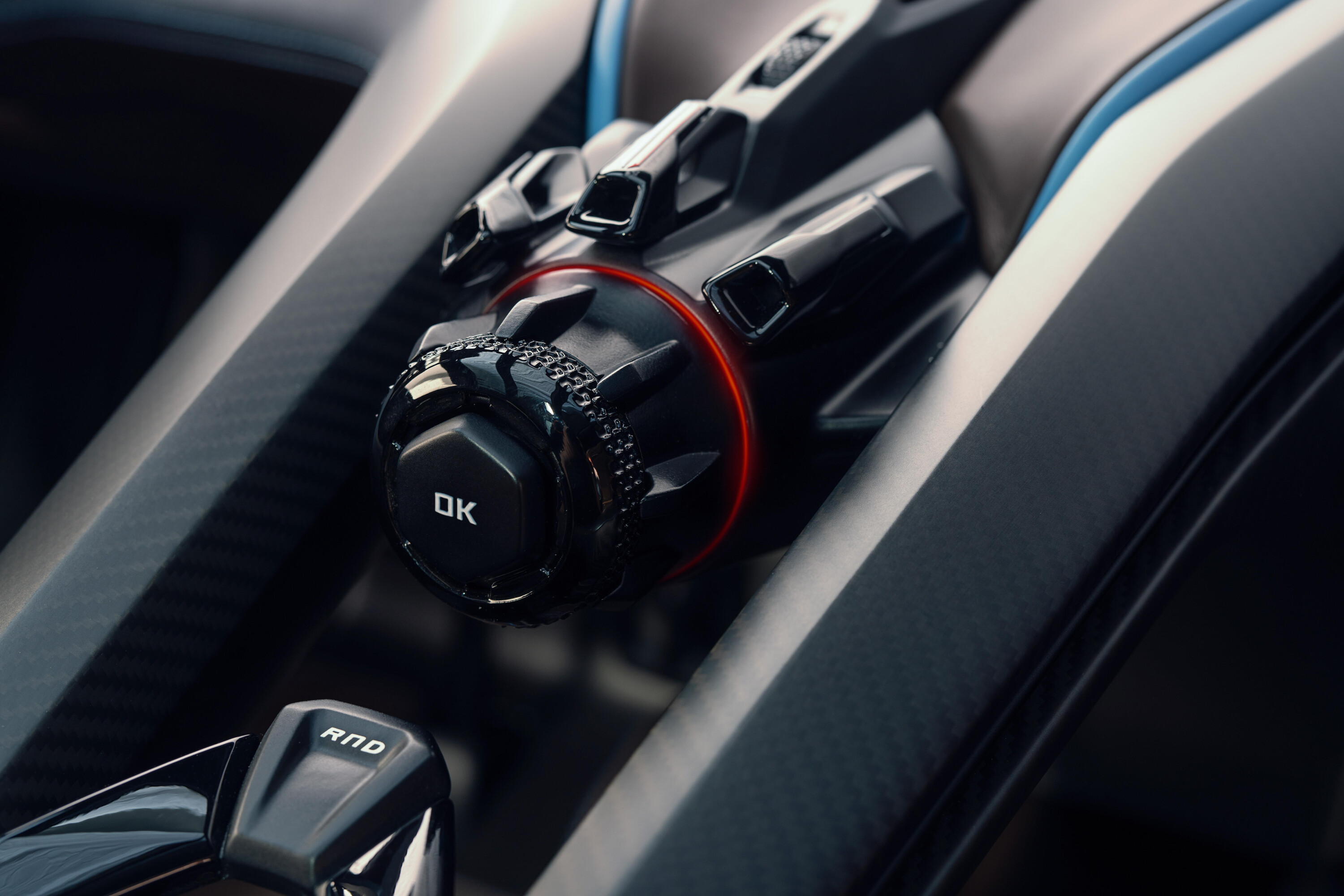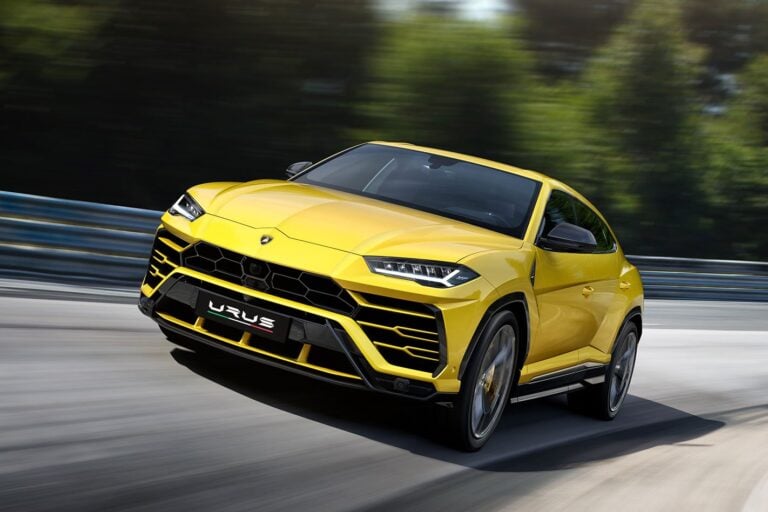Lamborghini’s first ever electric car has been revealed at Monterey Car Week in California and it’s a low-slung, high-riding ‘Ultra GT’ than produces more than 1000kW. Yikes.
Called Lanzador, which translates as ‘lance’ or ‘spear’, the new model is a 2+2 and will become Lamborghini’s long awaited fourth model line alongside Revuelto, Urus and the soon-to-be-announced Huracan successor.
Lanzador is officially a concept car – the production model won’t be built until 2028 – but Lambo says it provides a “concrete preview of the production vehicle that Lamborghini will present.”

It also, says Lamborghini, creates an entirely new segment for high-performance EVs that it has labelled “Ultra GT”.
It’s certainly an intriguing car to behold. Notice how it has more ground clearance and a higher driving position than Lambo’s dedicated supercars, yet it still retains a sleek, swoopy silhouette?
As for size, the only dimension Lamborghini has provided is a roof height of 1500mm, which is about the same as an Audi RS6. And is anyone else picking up hints of Ferrari Purosangue in the pinched waistline and flared hips/rear guards?

Lanzador should be ferociously fast, too. Being a concept car means we only have a few concrete technical details but Lamborghini has confirmed its new EV has “peak power of over one megawatt”. That’s 1000kW+. Or about 1400hp in the old money. Plenty, in other words.
Producing all that grunt is two e-motors (one per axle) and a “new-generation high-performance battery, which also ensures long range,” says Lamborghini.
No word yet on what architecture will underpin Lanzador – Lambo’s press release says it uses a “unique architecture developed for the car” – however it’s a fair guess to assume it’ll ride on the VW Group’s upcoming, all-new Scalable Systems Platform (SSP).

SSP is designed to be flexible enough to produce everything from low-power city cars to 1000kW hypercars and should debut sometime in 2026.
Moving to an electric platform has also opened up an entirely new performance envelope for Lamborghini to explore. “Electrification does not mean a restriction, but an intelligent opportunity to develop more performance and drivability,” says Lambo’s chief technical officer, Rouven Mohr.
Air suspension, enormous 23-inch alloy and fully variable torque distribution are all present but Lambo is most excited about its new drive-mode software, which it calls Lamborghini Dinamica Veicolo Integrata (LDVI).

Arming Lanzador with more sensors and actuators has allowed Lamborghini’s engineers to “create even finer and more precise driving behaviour”.
There’s also more complex software and an ‘advanced algorithm’ that can apparently tailor the car’s feedback and behaviour to individual drivers. Consider us intrigued by that one.
Active aero also plays a huge role in how Lanzador makes its performance. There are two aero settings – Efficient and Downforce – and the car’s body opens, shuts and moves in a variety of ways, depending on your speed and chosen setting.

The front splitter, for example, is extendable and doesn’t only boost downforce but can free up airflow to the brake ducts when in its most forward position.
There’s also an F1-inspired S-Duct integrated into the nose, moveable vents in the front bar and concealed louvres within the wheel arches that create downforce and reduce wheel-well turbulence without increasing drag.
Lamborghini’s much talked about ‘ALA’ (Aerodinamica Lamborghini Attiva) system, which debuted on the Huracan Performante, also features, and around the back there’s an enormous blown diffuser. The rear end also includes “narrow air blades” that can extend from the side panels and the diffuser to improve downforce.

As for what’s missing? There are no pesky drag-inducing wing mirrors, with rearward vision instead taken care of via twin screens built into Lanzador’s dash.
Form factor wise, Lanzador is Lamborghini’s first four-seater GT car in 44 years. The last model to fill that role in Lamborghini’s line-up was the Gandini-designed Urraco of 1972-79 but the Italian brand has a long history of building 2+2s that stretches all the way back to the gorgeous 400 GT of the mid 1960s.
Lambo’s back catalogue was also used for inspiration when it came to Lanzdaor’s exterior design. The recent Countach LPI 800-4, for instance, is said to have inspired the ultra slim headlights, while the Sesto Elemento and Murcielago also have had elements lifted and interpreted in Lanzador’s bold exterior.

Spaceships also played a role, according to Lambo’s design team: “The design approach used for the GT concept car is inspired by spaceships,” says the official press material.
It’s inside where Lanzador looks most like a concept car. Ultra thin seats and a slender, almost architectural Y-Shaped ‘central bridge’ dominate a design that’s clearly meant to make the cabin feel as airy as possible.
A vast panoramic roof also features, as do twin widescreen displays (one ahead of the driver and another for the passenger) which are controlled via an intricately designed ‘pilot’s unit’ in the centre of the dash. Credit where it’s due: that control unit does actually look like an inverted spaceship thruster.

There are plenty of typical Lambo touches, of course – there’s a heavy use of the Y-shape motif and also plenty of hexagons – and cabin storage hasn’t been forgotten either thanks to a deep cubby beneath the centre console, twin cupholders and relatively large looking door pockets.
Lamborghini says the cabin is made almost entirely of sustainable materials, all of which are made in Italy. The leather, for example, is tanned in an eco-friendly process that uses recycled water from olive oil production.
The nylon stitching and plastics are also recycled and the carbonfibre is ‘regenerated’ which is a new process of interlacing different layers of the carbon weave with eco friendly materials like natural fibres and reused PET bottles.

And as for the Aussie connection we mentioned earlier? All of the wool used on the seats, doors and dash comes from Aussie merino sheep. You beauty!
Now, those back seats. Defining the Lanzdaor as a 2+2 is a heavy hint that passengers shouldn’t expect S-Class levels of room back there but the rear pews do look decently sized and score their own tablets on the back of the front seats.
The back seats also fold – uniquely the headrests stay mounted to the roof – and they slide fore-and-aft so owners can vary the amount of rear passenger room and luggage space.
Speaking of boots, there are two: one in the steeply raked nose and a larger, glass enclosed boot at the rear. Lamborghini says this makes Lanzador “adaptable to almost any everyday situation”.

As for sales expectations? Lamborghini’s CEO Stephen Winklemann told us Lanzador should sit between the Revuelto and Huracan in terms of outright units, meaning it’ll be well behind Urus as the brand’s top seller.
“We see a market which is not the size of Urus, this is for sure because it’s more a 2+2,” he told Wheels. “So the sales expectation is driven by the size of the segment. And we are looking into something that we think is in-between Revuleto and Huracan in terms of this model. When we plan, we plan it always in a very conservative way.”
There’s nothing conservative about the Lanzador’s appearance, though. Or the sheer scale of its ambition. As the first ever pure electric Lamborghini, it doesn’t only need to slot neatly into the existing range, it has to spearhead a future for the Raging Bull that isn’t centred around orchestral combustion engines. And for a brand like Lamborghini, that’s quite a challenge.

More EV stories to help you choose the best car for your needs
- ? EV news, reviews, advice & guides
- ❓ Short & sweet: Your EV questions answered
- ⚡ New EVs: Everything coming to Australia
- ? Australia’s EVs with the longest driving range
- ⚖️ Best-value EVs by driving range
- ? How much do EVs cost in Australia?
- ? How much more expensive are EVs?
- ⚖️ Number crunching: Is it time to switch to an EV?
- ♻ Should you buy a used EV?
- ?️ Are EVs more expensive to insure?
- ? Costs compared: Charging an EV vs fueling a car
- ? EV charging guide
- ? Are there enough EV chargers in Oz?
- ?? EV servicing explained
- ? EV battery types explained
- ? When do EV batteries need replacing?
- ? Hydrogen v EVs: What’s best for Oz?
- ✋? Mind your manners! EV charging etiquette tips
- ? How sustainable are EVs, really?
MORE advice stories to help you with buying and owning a car
We recommend
-
 News
News2029 Lamborghini Urus replacement will be electric-only
Lamborghini’s CEO has confirmed its next-gen SUV will be a battery-electric only proposition amid emissions mandates
-
 News
NewsLamborghini may offer electric GT model by 2027
A fourth model from Lamborghini is rumoured to be a 2+2 coupe with an all-electric powertrain
-
 News
NewsLamborghini announces first full EV expected by 2030
Italian bull raging towards electrification producing hybrids only by 2024






